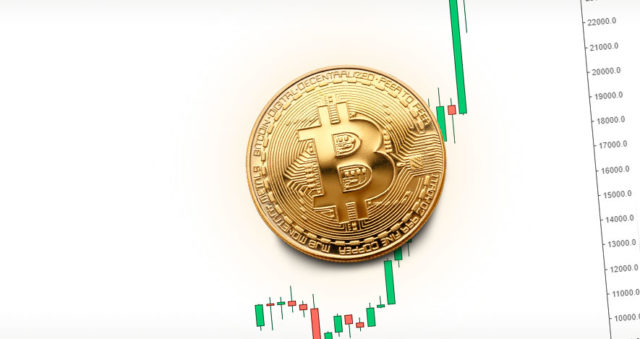Beginners encountering the Ethereum network for the first time may be confused by the slowness and high cost of transactions. Despite the fact that Ethereum is obviously the leader among ecosystem blockchains, it itself does not always technically keep up with the needs of users, writes RBC Crypto.
Some developers are building competing blockchains on unique infrastructure, but others are focusing resources on creating modular blockchain solutions that run on top of Ethereum, allowing for cheaper and faster mainnet transactions.
Those betting on so-called “layer two” (L2) solutions see them as the future of how Ethereum will meet user needs. From 2021 to 2023, venture capitalists poured billions of dollars into Ethereum scaling products that they believe could become the primary interface for users. Several such startups have achieved unicorn status.
One of them, Optimism, has received financial backing from prominent Silicon Valley crypto investors. In March 2022, Op Labs, the company behind the project, closed a $150 million funding round led by Paradigm and Andreessen Horowitz (a16z) at a valuation of $1.65 billion.
According to the analytical service DefiLlama, the value of assets (total value locked, TVL) in applications and protocols running on Optimism exceeds $600 million. The market leader among “second-level” blockchains remains the main competitor – Arbitrum from Offchain Labs (TVL $1.65 billion at the time of writing).
But unlike some of its competitors, Optimism is actually a public benefit corporation with an open source code base.
This approach has already led to the emergence of several popular forks (modified copies of the code) of Optimism. The Optimism toolkit (stack) and code fragments were used in the development of another popular “second-level” blockchain – Base from the second largest crypto exchange Coinbase. Since the launch of Base in early August, the average daily number of transactions has decreased for both Optimism and Arbitrum. At the same time, the average weekly number of transactions in the Base network on September 25 reached 921 thousand, compared to 603 thousand for Arbitrum and 334 thousand for Optimism.
“Second-level” solutions exist in various variants, the most famous of which are Zero-Knowledge (ZK) rollups and Optimistic rollups (from English roll up – “collapse”). Optimism is based on Optimistic rollups technology, which is generally seen as a more viable solution in the near term due to some of the cryptographic complexities of ZK rollups created by startups such as StarkWare or Matter Labs, the company behind the zkSync solution.
How does Optimism work?
The Optimism Protocol allows the Ethereum main network to scale by collecting transaction data from its blockchain, bundling it into individual batches, and then executing those transactions en masse. This data is then sent back to the Ethereum mainnet for validation as the next added block of data. Due to this, the fees required to complete transactions are sharply reduced compared to what they would be if they were performed on Ethereum at the base level.
Optimism, like other solutions from the Optimistic rollups group, uses smart contracts as “bridges” between the main network and its own L2 blockchain. The developers used a process called “proof of error” (fault proof, formerly fraud proof), in which distributed operators of nodes (nodes) that support the operation of the blockchain receive fines for dishonest actions or compensation for proven attempts to manipulate data.
All solutions of the Optimistic rollups group are based on the fact that any transactions on the network are valid until proven otherwise. That is why the term “optimism” reflects the essence of such decisions. Moreover, each transaction can be subject to verification. Incorrect transactions are rejected, and the node that sent them to the blockchain is subject to punishment – “slashing”.
Thanks to batch processing of transactions, Optimism has on average 10 times lower fees than Ethereum at the base level. Since its launch in 2021, the protocol has saved users over $1 billion in ETH in so-called gas payments.
Token and airdrops
In April 2022, the developers launched a decentralized autonomous organization (DAO), called Optimism Collective, and for the first time announced the distribution (airdrop) of OP tokens, which are used in it as a governance token. A similar approach was later used by Offchain Labs, creating the Arbitrum Foundation and launching the largest airdop of its own ARB token in the history of cryptocurrencies.
At the same time, Optimism initially announced several rounds of airdrops in order to further encourage the use or refinement of the protocol even by those users who were not able to get into the first round of token distribution. In September of this year, the team distributed 19.4 million OP tokens with a total value of approximately $27 million among 31 thousand recipients who were active in Optimism Collective projects as part of the second planned distribution.
A few days before this, the developers distributed 48 million OP unclaimed during the first airdrop (more than $67 million at the exchange rate at the time of publication) among 88 thousand suitable wallets. For comparison, the founders of Arbitrum decided to send similarly undistributed tokens to the “treasury” of the Arbitrum Foundation.
The capitalization of the OP token at the time of publication exceeds $1 billion; it is traded on leading cryptocurrency exchanges – Binance, Coinbase, KuCoin, Bitfinex and others. In addition to being used in Optimism Collective voting, the token apparently serves as a financial base for developers. September 20 they started sale of 116 million OP tokens ($162 million) to seven private buyers who will use them to manage the Optimism Collective treasury.
Source: Cryptocurrency
I am an experienced journalist and writer with a career in the news industry. My focus is on covering Top News stories for World Stock Market, where I provide comprehensive analysis and commentary on markets around the world. I have expertise in writing both long-form articles and shorter pieces that deliver timely, relevant updates to readers.







